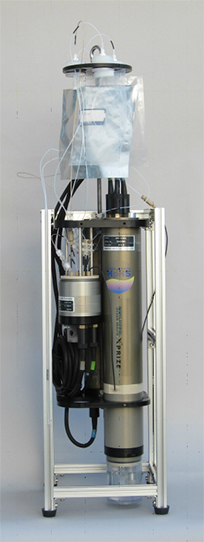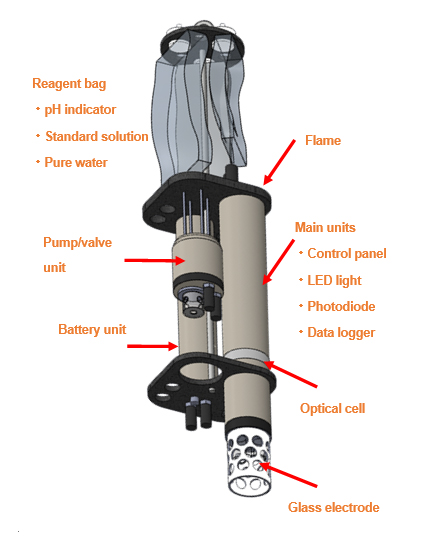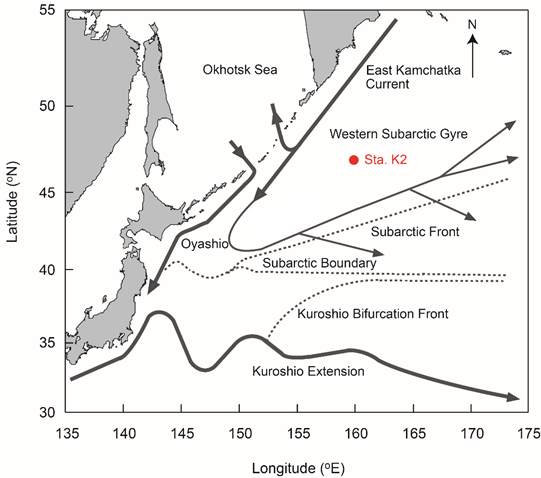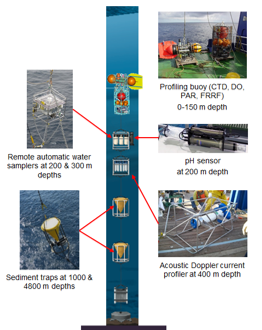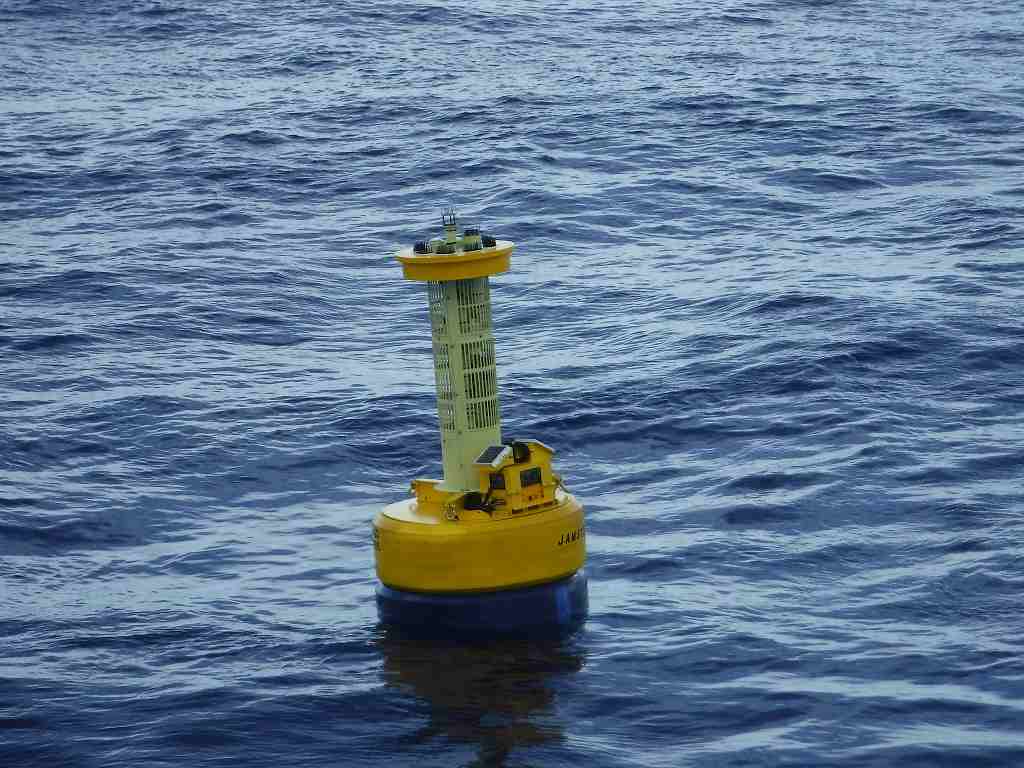Development of a highly accurate pH sensor for monitoring ocean acidification

To contribute to the goal related to ocean acidification described in SDG14, continuous accumulation of ocean pH data is needed. There is great need for quality instrumentation to assess and monitor slight changes in seawater pH. To meet this need, JAMSTEC and Kimoto Electric Co., Ltd., have developed an in situ highly accurate pH sensor (Hybrid pH sensor: HpHS) for long-term seawater pH monitoring. The HpHS has two types of pH sensors (i.e. potentiometric pH and spectrophotometric pH sensors). HpHS corrects the value of the potentiometric pH sensor (frequently measuring) by the value of the spectrophotometric pH sensor making it possible to calibrate in situ with a standard solution.
To investigate the spatial and temporal variability of biogeochemical processes in the subarctic western North Pacific, time-series observations have been conducted since 1997 at Sta. K2 (47oN, 160oE). JAMSTEC began time-series observations for an impact assessment of the ocean acidification at Sta. K2 in 2015 using a hybrid profiling buoy system that consists mainly of an HpHS, a remote automatic water sampler, an acoustic Doppler current profiler, and a sediment trap. We succeeded in observing seawater pH every four hours for four years.
We have been deploying the HpHS in the Arctic Ocean and Antarctic Ocean which contribute to continuously accumulating much more oceanic pH data all over the world.
